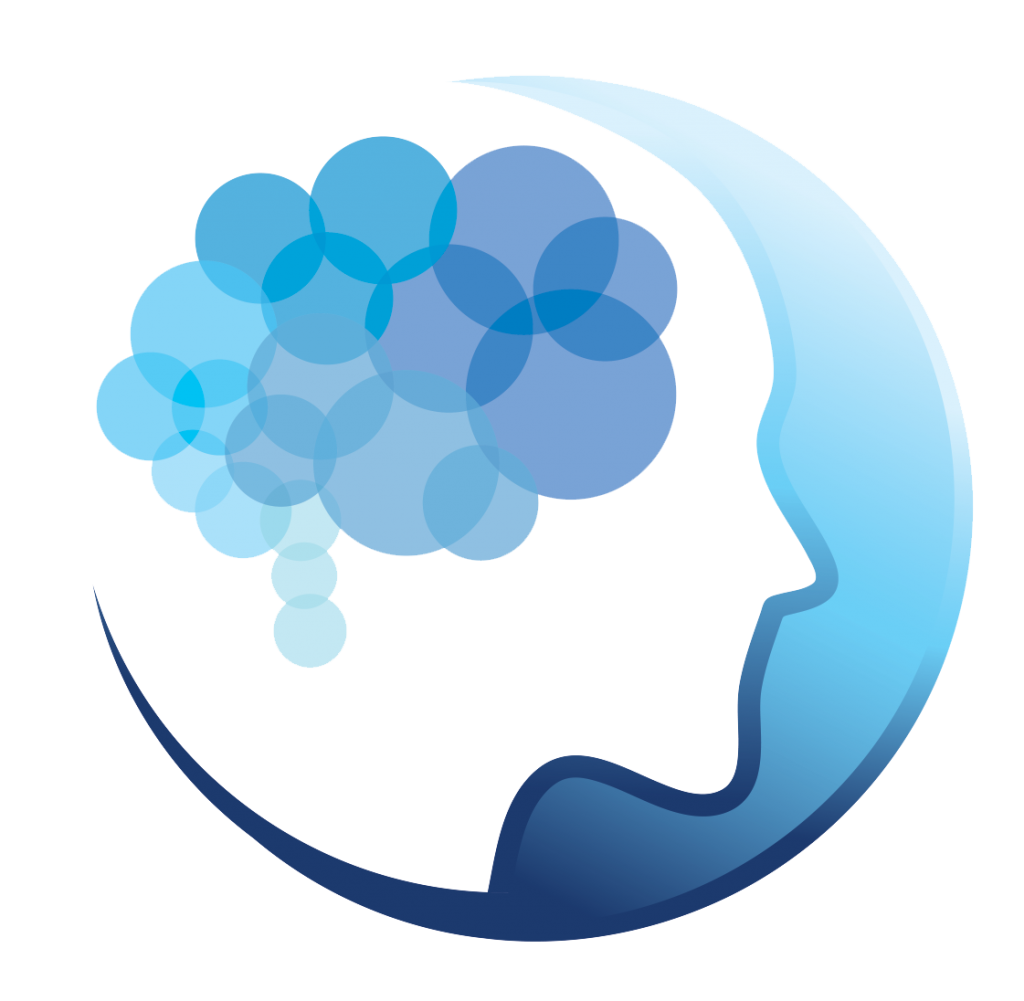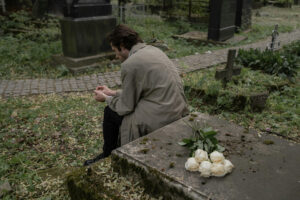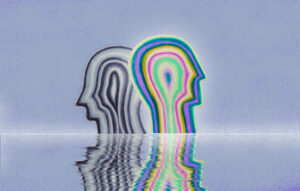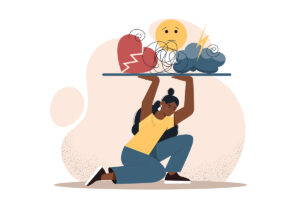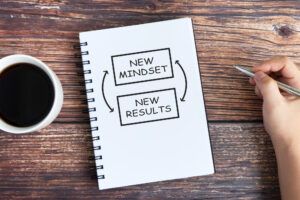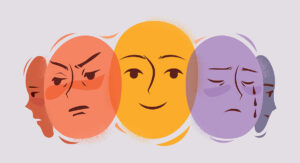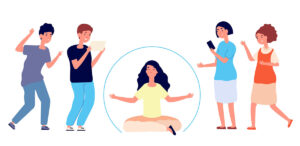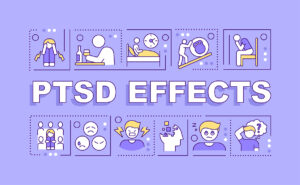Related Resources
For Moving Forward
An Introduction to the Havening Touch
Dr. Kate Truitt introduces us to the havening touch in this psychoeducational video. She begins by explaining that havening touch can actually shift the way our brain is functioning in the moment. We have the ability to actually shift the electrochemical experience of our brain.
Havening touch works by utilizing the receptors embedded in the skin. Some respond to fast touch, while some respond to slow, gentle touch. The receptors go up to our brain which interprets the sensation we are experiencing. The havening touch engages C-tactile fibers in our skin that transmit information to our insula and areas of our prefrontal cortex. This can shift the way our brain is interacting in a given moment. This simple touch doesn’t require a lot of executive function or attention while we do it. Our brain can be engaged in other cognitive exercises at the same time, which empowers the Havening Techniques. These receptors have been shown to decrease cortisol and norepinephrine, which are contributors of anxiety and stress.
Havening touch actually decreases the presence of these excitatory neurochemicals in our brain. It has also been shown that havening touch increases oxytocin, which helps us to feel safe and connected in the world.
How to Enhance Gratitude & Celebrate Wins
In this interview, Dr. Kate Truitt and Damien Gonsalves, LMFT, discuss the Gratitude and Wins exercise, where we notice what we’re grateful for and what our wins are. This allows us to appreciate the things outside of us and within us. Damien recommends this exercise to anybody.
The wins aspect of the exercise allows us to acknowledge the wins along the way to our greater goal, and the wins can be something small or large. This exercise also allows us to weave in affirmations. In this video Dr. Kate mentions the Gratitude List Technique. You may find this video here: https://youtu.be/fo3Ns4jYNH0
A Therapy Tool for Letting Go of Anxiety, Worry, & Chaos
In this interview, Dr. Kate Truitt and Damien Gonsalves discuss the GOD Box, or the Good and Orderly Direction Box. Damien explains that it’s about letting something go and having a tangible way to do that.
Being able to let go of things we’re ruminating on allows for new things to come into our life. Dr. Kate asks Damien if we can use the GOD Box in combination with the Gratitude and Wins List. Using the box for both emphasizes the finite nature of everything. We aren’t going to dig through and reread the items in the box. It’s important to purge these lists after time.
Putting something tangibly away gives us the cognitive permission for that space to exist. In this video Dr. Kate and Damien also mention the CPR for the Amygdala Self-Havening Tool. Find that playlist at this link.
The G.O.D. Box and Gratitude and Wins Exercise: Two Therapeutic Tools to Help Us Live Our Best Lives
By Dr. Kate Truitt
Do you ever find yourself living and reliving painful experiences or conversations in your life, unable to stop dwelling on them? It doesn’t have to be something from the past that eats at you. You might have an important event coming up in your life, which causes a multitude of what-if scenarios to parade through your mind. If these sound familiar to you, then you have probably experienced rumination in your life. Whether they are about the past or the future, all rumination episodes have their origins in your past and that past is intruding on the present.
Amy's Rumination Loop of Doom and Gloom

These often painful or anxiety-ridden loops are caused by the amygdala of our brains (which I like to call “Amy”) taking control of our thinking process when something happens that reminds Amy of an experience from our past that she perceives as a threat. She is just doing her job of keeping us “safe.” These experiences are what I call Amy’s rumination loop of doom and gloom, and we can get stuck in it.
Eventually, ruminations can evolve into cognitive distortions or schemas—easily accessed frameworks for how the brain makes sense of the world. You may have heard of a few of these, such as black and white (all or nothing) thinking, catastrophizing, self-sabotaging, and personalization (taking everything personally). Depending on the environment we have grown up in over the course of our lives we can develop a negativistic or maladaptive approach to the world. If we grew up in an environment of constant criticism, we will likely be looking for it around every corner it in our present world. Growing up like this can cause us to develop painful schemas around our sense of Self—like I’m stupid, or I’m unlovable or I’m a failure—and these can get in the way of us living our best lives.
The biggest problem with these cognitive distortions is they are too easy for us to access. And they become the simple way out, however painful or maladaptive. Obviously, we would love to let go of that doom and gloom loop when it takes hold of us. Who would want to stay in there, going round and round? But is it possible to get unstuck from it?
Luckily, because of the power of neuroplasticity—that lifelong ability of our brains to continue to grow and create new connections to better places—we do have the ability to release ourselves and move forward. In this article, I am going to show you two exercises/tools that can help you let go of things that no longer are working for you in your present life and help Amy move out of her doom and gloom loops. These tools were developed and are used extensively by Damien Gonsalves, a Licensed Marriage and Family Therapist and valued Clinical Associate on the Dr. Kate Truitt & Associates team. Damien uses these tools in his work with addiction, complex trauma, and co-occurring disorders, but they can be helpful and even life-changing for anyone.
Introducing the G.o.d. Box

The first of these exercises/tools is what we call the G.O.D. box, where the GOD can stand for the Good and Orderly Direction. You may also think of it as a pathway that allows people to release situations that are beyond their individual control to a higher power with whom they feel comfortable. This doesn’t necessarily mean a deity, but rather any higher spiritual being in whom a person can place his or her faith, including the Universe as a whole.
“It’s about turning something over and letting something go, into a certain space,” Damien says. “It’s a way of giving you the physical, tangible experience of actually putting something out there and handing it in—a request for something to be removed or finding something else in your life while letting something go that no longer serves you.”
So, the exercise part of the GOD box is about letting something go, and the tool part is about having a tangible way to do that. Any type of container will do for your GOD box, but I suggest a small box you personally make, something you feel connected to or can decorate as a special place for the messages to be kept in. The box should be made with a small slot in it somewhere.
Once you have made your box, whenever there’s something in your life that you want to let go of, write that thing down on a piece of paper and drop it into the box. Your box should be made so that it is not easy to extract these messages. The intention is to let go of whatever is written there for good. I asked Damien for an example of how this looks in practice. “Basically, if there is something that doesn’t serve you or that makes you uncomfortable or that you are just stuck on, just write a short description of what that is, drop it in the box,” he said. “Let it go for 24 hours and just let the Universe have it, and let it do what it needs to do. Then if you still feel the same way about it the next day, write it down again and put it in the box. This act of letting go helps Amy stop ruminating on less-than-preferable things and allows for new things come into your life.”
The practice of writing down your concerns on a piece of paper and placing them inside a box enables you to unburden yourself from the thoughts you are holding onto, removing them from yourself and placing them into a safe space. The GOD box creates a holding space for the anxieties and worries that just love to spin stories in our brain. The practice is about turning it over or surrendering—allowing yourself the freedom to let go of over-thinking things and allowing room for open thought and mindfulness. When we write down our thoughts, resentments, problems, people, places, and things that seem to control our lives and place them in a GOD box, we stop living in the problem and open ourselves to begin living in the solution.
When we use the GOD box, we don’t leave it out in the open for other people to read or to ask us questions about it. A GOD box should be treated like a diary—kept in a place where we have easy access to it but where other people cannot see it.
After practicing this for a while, you may open the box and look at the issues you have faced and notice opportunity for growth. Some people have issues with the idea of surrendering, but think of it this way: You’re not giving up, you’re letting go. After reviewing them and considering what degree of success you have had in letting these things go, you may want to throw away some of these items or resubmit some as an opportunity for continued growth. It can be good reminder that progress is not the forward thinking of goals but the measurement of the progress of where we were and where we are now.
Which brings me to our second exercise, which can help further with that..
The Gratitude and Wins Exercise
Another exercise Damien uses, which can actually be used in conjunction with the GOD box, is the Gratitude and Wins Exercise, which helps us be mindful of things we are grateful for and the little wins that we constantly achieve in our journey toward our bigger goals. This allows us to appreciate the things outside of us and within us.
“Combining these two concepts is helpful because many times gratitude is for experiences we are grateful for that are far outside of yourself and noticing the wins brings it back into yourself,” Damien says.
Practicing gratitude need not be time-consuming or complicated. Every day, just write down three things you are grateful for—tonight’s beautiful sunset, the smile and friendly wave of your neighbor as you left for work this morning, or the lack of traffic on the way home. Any little bright spots in your day. Make sure you create a different list every day and express gratitude for a wide range of things—big and small. Big like a new promotion at work or small like the sight of a ladybug on a leaf after a rain.
These moments of gratitude may also be thought of as gifts or wins. For someone who has been suffering from depression, “I got out of bed today” can be both a moment to express gratitude for and something to celebrate as a win. Could even be a gift, come to think of it.
Small wins can have great significance when we consider the entire journey toward our greater goals. An example of that in the moment might be, “I may not have gotten the big job that is going propel me forward in my career, but boy did I ever nail that first interview, which got me to a second interview this time.” These wins can be anything that challenges you to the next level or teaches you something valuable that you never knew. Write these down to remind you of where you want to be and all of the little steps that are moving you in that direction.
The purpose of making a gratitude and wins list is to focus on what’s going on in your life and remind you that everything is finite. Expressing gratitude and celebrating wins promotes self-awareness of steps in between where we started and where we are getting to. It’s a mindful reframing practice that recognizes that both positive and negative things in your life hold meaning and affect your well-being.
This exercise is also an opportunity to weave in positive affirmations. When you list an item, you can communicate it to yourself or another person and then apply the gentle havening touch to reinforce the gratitude you have for that item. If you are not familiar with havening, you can learn how to apply it and find out more about the science behind it in the brief video in the sidebar titled, “An Introduction to the Havening Touch.” As you apply the havening touch, read your gratitude list aloud.
You start each item on your gratitude and wins list with:
“Today I am grateful for__________”
And go through them all in this manner.
You then reframe your reading list bottom to the top by saying before each item:
“I am mindful of ________”
And then finally, reading the list again top to bottom using “_______ is a win” or “_______ is a gift”
This is all done while applying the soothing havening touch. In doing this you are also practicing what is called “mental rehearsal,” which teaches your brain to recognize what is important and what matters to you.
I encourage you keep this list in a journal to review later. You may want to reuse items in future lists. Be specific with your list. As an example, you may want to say, “I am grateful for my dog Spot” rather than I am grateful for my pet.” It personalizes your experience.
Finally, if you are struggling with your Gratitude and Wins list, try making a “Crappy” List and utilize the exercise using reframe:
“__________ is crappy.”
“I am mindful of __________.”
“I am aware of ___________. “
You may decide to complete the process by stating “I am aware of __________, (pause) and I am O.K.” By doing this you are giving yourself permission to hold two separate thoughts—acknowledging the “crappy” feeling or thought and trusting that you can be O.K. in the moment. Even if it is still a struggle, you are giving yourself permission to have your feelings and avoid being hijacked by the feelings.
Damien says that anyone who is looking to be more centered and positive can benefit from maintaining and revisiting a gratitude and wins list. “It helps them go through their day in a more mindful way, thinking: What was that one thing, what was that one step where I moved forward from where I was?
Using tools like the GOD Box and the Gratitude and Wins List gives you the power to heal the past, create your present, and build the future. We all have the healing power in our hands, minds and bodies to do so.
Learn more by visiting the video links in the sidebar of this article.
